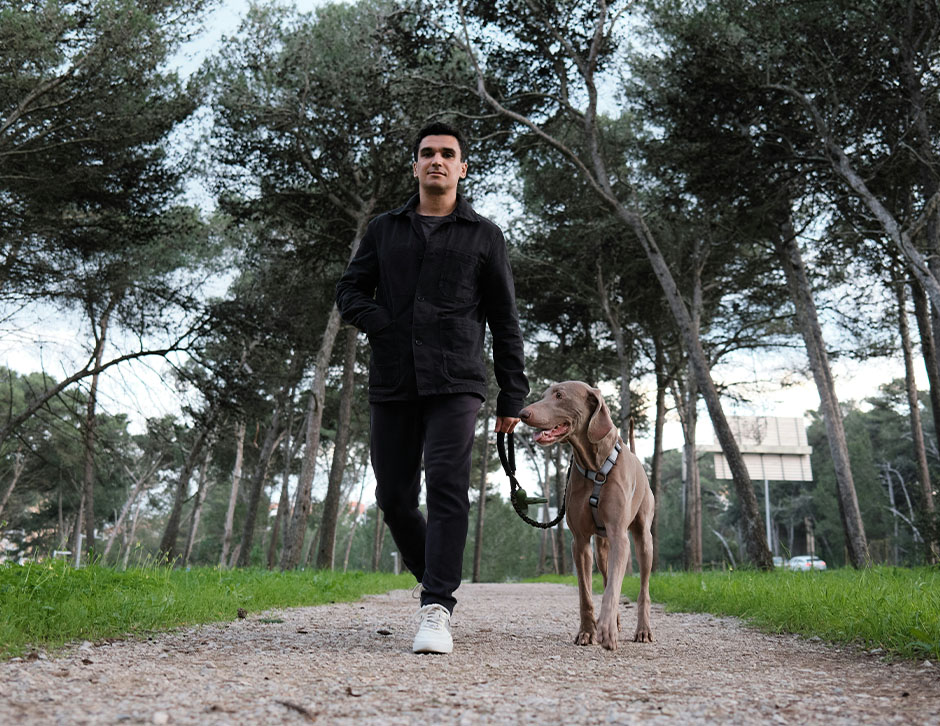
Here’s what we’ll cover in this blog post:
- The benefits of post-meal walks
- How glucose affects longevity
- Strategies to increase the frequency of daily walks
Ever felt like you needed a nap right after lunch? That mid-afternoon slump isn’t just in your head. It’s your body crying out for help. But what if there’s a simple way to dodge that sluggish feeling and supercharge your health at the same time?
We’re about to dive into the easiest health hack you’ve likely been overlooking: the post-meal walk. This isn’t just another fleeting health trend; it’s backed by solid science and could be the key to unlocking a healthier, more energetic you.
The Blood Sugar Rollercoaster
First things first, let’s talk about what happens when you eat. You eat that sandwich, and your body gets to work breaking it down into glucose (your cells’ favorite energy source). As glucose floods into your bloodstream, your pancreas jumps into action, pumping out insulin to help your cells absorb all that sugar.
Sounds great, right? Well, not so fast. If you’re constantly filling your system with high-carb or sugary meals, you’re basically putting your body on a blood sugar rollercoaster. Over time, this can lead to issues such as insulin resistance, unwanted fat, and chronic inflammation.
Your muscles are like sponges for glucose. When you move, they soak up that excess sugar from your bloodstream, helping to flatten out those post-meal glucose spikes. And that’s where our 15-minute miracle comes in.
How a Simple Walk Can Change Everything
Now, you might be thinking, “Great, another article telling me to exercise more.” But hold on…we’re not talking about intense gym sessions or marathon training here. We’re talking about something so simple, you probably do it every day without even thinking about it: walking.
Here’s the kicker: timing is everything. Research shows that taking a short walk within 15-20 minutes after a meal can have a dramatic effect on your blood sugar levels.
One study found that just 2 minutes of post-meal walking reduced blood sugar spikes compared to sitting still. If you can’t go on a walk, stand up. That helps too!
But why does this work so well? When you start moving after a meal, your muscles immediately increase their glucose uptake. Instead of that sugar floating around in your bloodstream, potentially causing harm, it’s being used as fuel for your movement. It’s like giving your body a head start on processing that meal.
And the benefits don’t stop there. By consistently flattening out those post-meal glucose curves, you’re not just avoiding the immediate discomfort of blood sugar crashes. You’re setting yourself up for long-term health benefits that go way beyond just feeling more energetic after lunch.
The Long-Term Benefits of Post-Meal Walks
Managing your blood sugar isn’t just about avoiding that afternoon slump. It’s about investing in your long-term health and longevity. When you keep your blood sugar levels stable, you’re:
- Supporting healthy weight management
- Boosting your mitochondrial health (the powerhouses of your cells)
- Lowering inflammation throughout your body
- Protecting yourself against metabolic disorders like type 2 diabetes
Every time you take that post-meal walk, you’re making a deposit in your health savings account. It might not feel like much in the moment, but over time, those deposits add up to large returns.
The benefits of post-meal walks aren’t just limited to high-carb meals. Even after a protein-rich or “healthy” meal, a short walk can help optimize your body’s response. It’s like giving your metabolism a little nudge in the right direction, no matter what’s on your plate.
Real-World Strategies for Post-Meal Walks
Alright, so we’ve covered the why. Now let’s talk about the how. The truth is, in our busy, often desk-bound lives, finding time for a post-meal walk isn’t always easy. But with a little creativity, you can make it happen.
Here are some practical ways to sneak in those crucial 15 minutes:
- Take phone calls on the go
Next time you have a post-lunch conference call, consider taking it on a walk. - Make it a family affair
After dinner, invite your loved ones for a quick neighborhood walk. It’s a great way to connect and boost everyone’s health. - Use your lunch break wisely
Even if you eat at your desk, use the rest of your break for a quick walk around the block. - Set a reminder
Use your phone or smartwatch to prompt you 15 minutes after your usual meal times.
Remember, you don’t need a continuous 15-minute walk to get longevity benefits. Three 5-minute strolls throughout the day can be just as effective. The key is consistency and making it a non-negotiable part of your routine.
Post-Meal Walks and Longevity
Here’s the thing about health: it’s often the small, consistent actions that make the biggest difference. And post-meal walks are the perfect example of this principle in action.
You’re not reinventing the wheel or drastically overhauling your diet or committing to hours at the gym. You’re simply adding a 15-minute walk to your day. It’s a small step that can lead to big changes in how you feel, how you manage your weight, and how you age.
Remember, the path to better health isn’t always about grand gestures or extreme measures. Sometimes, it’s as simple as putting one foot in front of the other. So why not start today? Your 15-minute miracle is waiting just outside your door.
Note: The above statements have not been evaluated by the Food and Drug Administration. This product is not intended to diagnose, treat, cure, or prevent any disease.
